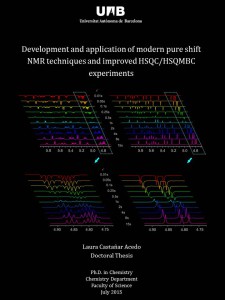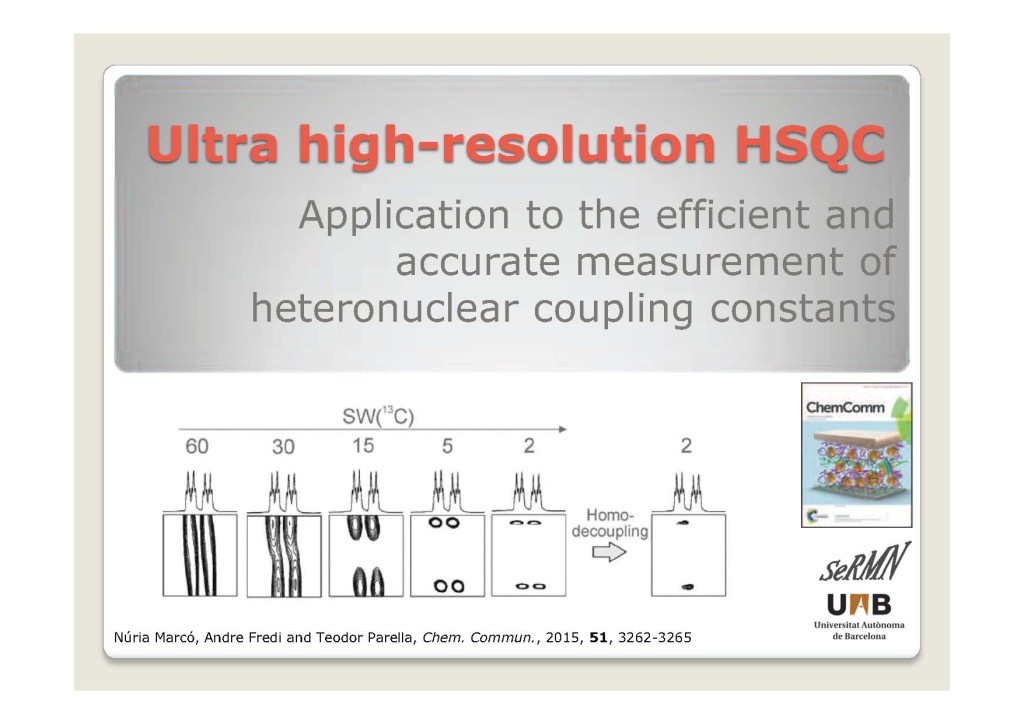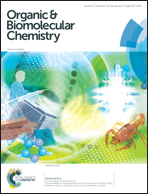Some of the SeRMN staff will present our last research works at the annual meeting of the European magnetic resonance community EUROMAR 2015 Conference that will take place from 5th to 10th July in Prague, Czech Republic. Find below a summary of our contributions. Continue reading SeRMN contributions at EUROMAR 2015 Conference
PhD Thesis by Laura Castañar: Pulse Programs and Data Set Examples
Development and application of modern pure shift NMR techniques and improved HSQC/HSQMBC experiments
In the following links one can find Data Set Examples of each Publication presented in the Thesis Work, as well as the corresponding Pulse Program Code for Bruker. All 2D spectra have been previously phased and 2ii, 2ir, and 2ri files removed, otherwise data sets would be too big. Continue reading PhD Thesis by Laura Castañar: Pulse Programs and Data Set Examples
Laura Castañar receives award at ENC 2015
Laura Castañar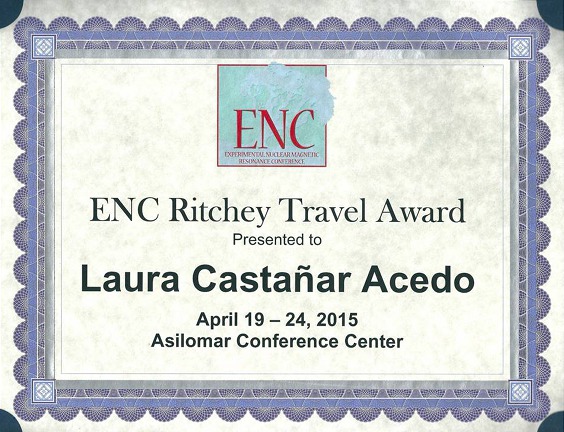 was honoured at the 56th Experimental Nuclear Magnetic Resonance Conference (ENC) with the Ritchey Travel Award for her Ph.D. Thesis research on “Development and application of modern pure shift NMR techniques and improved HSQC/HSQMBC experiments”. The award ceremony took place at the After-Dinner Program in Asilomar Conference Center in Pacific Grove, California, USA, the 23th April, 2015.
was honoured at the 56th Experimental Nuclear Magnetic Resonance Conference (ENC) with the Ritchey Travel Award for her Ph.D. Thesis research on “Development and application of modern pure shift NMR techniques and improved HSQC/HSQMBC experiments”. The award ceremony took place at the After-Dinner Program in Asilomar Conference Center in Pacific Grove, California, USA, the 23th April, 2015.
Continue reading Laura Castañar receives award at ENC 2015
Review – Pure shift NMR experiments: recent developments, methods and applications
 “Broadband 1H homodecoupled NMR experiments: recent developments, methods and applications” by Laura Castañar and Teodor Parella. Magnetic Resonance in Chemistry, 2015. DOI: 10.1002/mrc.4238
“Broadband 1H homodecoupled NMR experiments: recent developments, methods and applications” by Laura Castañar and Teodor Parella. Magnetic Resonance in Chemistry, 2015. DOI: 10.1002/mrc.4238
In recent years, a great interest in the development of new broadband 1H homonuclear decoupled techniques providing simplified JHH multiplet patterns has emerged again in the field of small molecule NMR. The resulting highly resolved 1H NMR spectra display resonances as collapsed singlets, therefore minimizing signal overlap and expediting spectral analysis. This review aims at presenting the most recent advances in pure shift NMR spectroscopy, with a particular emphasis to the Zangger–Sterk experiment. Continue reading Review – Pure shift NMR experiments: recent developments, methods and applications
Ultra high-resolution HSQC
SeRMN seminar
- Date: Thursday 7th May, 2015
- Hour: 15:30
- Location: SeRMN, Facultats de Ciències i Biociències, C2/-135
- Speaker: Núria Marcó, SeRMN PhD Student
The content of our recently published article entitled “Ultra high-resolution HSQC: Application to the efficient and accurate measurement of heteronuclear coupling constants” will be explained and discussed briefly. A rapid NMR data acquisition strategy in terms of enhanced resolution per time unit for the simple and efficient determination of multiple coupling constants is described. The use of 13C spectral aliasing combined with broadband 1H homodecoupling allows accurate measurements from ultra high resolved 2D HSQC cross-peaks.
SeRMN presentation at the 56th ENC 2015 Conference
During these days takes place the 56th Experimental Nuclear Magnetic Resonance Conference (ENC) in Asilomar Conference Grounds (Pacific Grove, California, USA) where Laura Castañar presents an Oral Communication entitled “HOBS: Broadband Homonuclear Decoupled Band-Selective NMR Experiments with Full Sensitivity” Continue reading SeRMN presentation at the 56th ENC 2015 Conference
NMR-Aided Differentiation of Enantiomers: Signal Enantioresolution
 “NMR-Aided Differentiation of Enantiomers: Signal Enantioresolution” by Míriam Pérez-Trujillo, Teodor Parella and Lars T. Kuhn. Analytica Chimica Acta, 2015. DOI: 10.1016/j.aca.2015.02.069
“NMR-Aided Differentiation of Enantiomers: Signal Enantioresolution” by Míriam Pérez-Trujillo, Teodor Parella and Lars T. Kuhn. Analytica Chimica Acta, 2015. DOI: 10.1016/j.aca.2015.02.069
NMR-aided enantiodiscrimination using chiral auxiliaries (CAs) is a recognized method for differentiating enantiomers and for measuring enantiomeric ratios (er). Up to the present, the study, optimization, and comparison of such methods have been performed based on the enantiodifferentiation of NMR signals via analysing non-equivalent chemical-shift values (ΔΔδ) of the diastereoisomeric species formed. However, a poor and non-reliable comparison of results is often obtained via the analysis of ΔΔδ exclusively. In here, the concept of enantioresolution of an individual NMR signal and its importance for NMR-aided enantiodifferentiation studies is introduced and discussed. Continue reading NMR-Aided Differentiation of Enantiomers: Signal Enantioresolution
Review: Recent Advances in Small Molecule NMR: Improved HSQC and HSQMBC Experiments
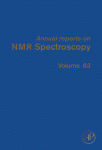 “Recent Advances in Small Molecule NMR: Improved HSQC and HSQMBC Experiments” by Laura Castañar and Teodor Parella. Annual Reports on NMR Spectroscopy, 2015, 84:163–232. DOI: 10.1016/bs.arnmr.2014.10.004
“Recent Advances in Small Molecule NMR: Improved HSQC and HSQMBC Experiments” by Laura Castañar and Teodor Parella. Annual Reports on NMR Spectroscopy, 2015, 84:163–232. DOI: 10.1016/bs.arnmr.2014.10.004
A general description of the latest developments in heteronuclear single-quantum correlation and heteronuclear single-quantum multiple bond correlation experiments designed for small molecules at the natural isotopic abundance is reported. Continue reading Review: Recent Advances in Small Molecule NMR: Improved HSQC and HSQMBC Experiments
In vivo MRS and ex vivo HRMAS in an Ischemic Rat Stroke Model
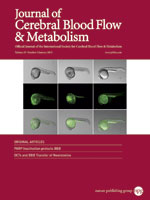 “In vivo and ex vivo Magnetic Resonance Spectroscopy of the Infarct and the Subventricular Zone in Experimental Stroke” by E. Jiménez-Xarrié, M. Davila, S. Gil-Perotín, A. Jurado-Rodríguez, A.P. Candiota, R. Delgado-Mederos, S. Lope-Piedrafita, J.M. García-Verdugo, C. Arús, J. Martí-Fàbregas. Journal of Cerebral Blood Flow & Metabolism, 2015, 35:828–834. DOI: 10.1038/jcbfm.2014.257
“In vivo and ex vivo Magnetic Resonance Spectroscopy of the Infarct and the Subventricular Zone in Experimental Stroke” by E. Jiménez-Xarrié, M. Davila, S. Gil-Perotín, A. Jurado-Rodríguez, A.P. Candiota, R. Delgado-Mederos, S. Lope-Piedrafita, J.M. García-Verdugo, C. Arús, J. Martí-Fàbregas. Journal of Cerebral Blood Flow & Metabolism, 2015, 35:828–834. DOI: 10.1038/jcbfm.2014.257
Ischemic stroke changes the metabolic pattern in the infarct area and also in other regions such as the ipsilateral subventricular zone (SVZi) where neural progenitor cells (NPCs) proliferation is enhanced in the mammalian and human brains. Magnetic resonance spectroscopy (MRS) provides metabolic information in vivo. With regard to NPCs proliferation, a resonance at 1.28 ppm has been described as an in vivo MRS biomarker of NPCs in the hippocampus of rats and humans. Continue reading In vivo MRS and ex vivo HRMAS in an Ischemic Rat Stroke Model
A New Polarizing Agent for Dissolution-DNP
“A Benzyl Alcohol Derivative of BDPA Radical for Fast Dissolution Dynamic Nuclear Polarization NMR Spectroscopy” by José Luis Muñoz Gómez, Eva Monteagudo, Vega Lloveras, Teodor Parella, Jaume Veciana and José Vidal Gancedo. Organic & Biomolecular Chemistry, 2015, 13:2689-2693. DOI: 10.1039/C4OB02356K
The synthesis, structural characterization and the successful application of a carbon centered radical derived from 1,3-bisdiphenylene-2-phenylallyl (BDPA), its benzyl alcohol derivative (BA-BDPA), as a polarizing agent for Dynamic Nuclear Polarization (DNP) are described. Continue reading A New Polarizing Agent for Dissolution-DNP

